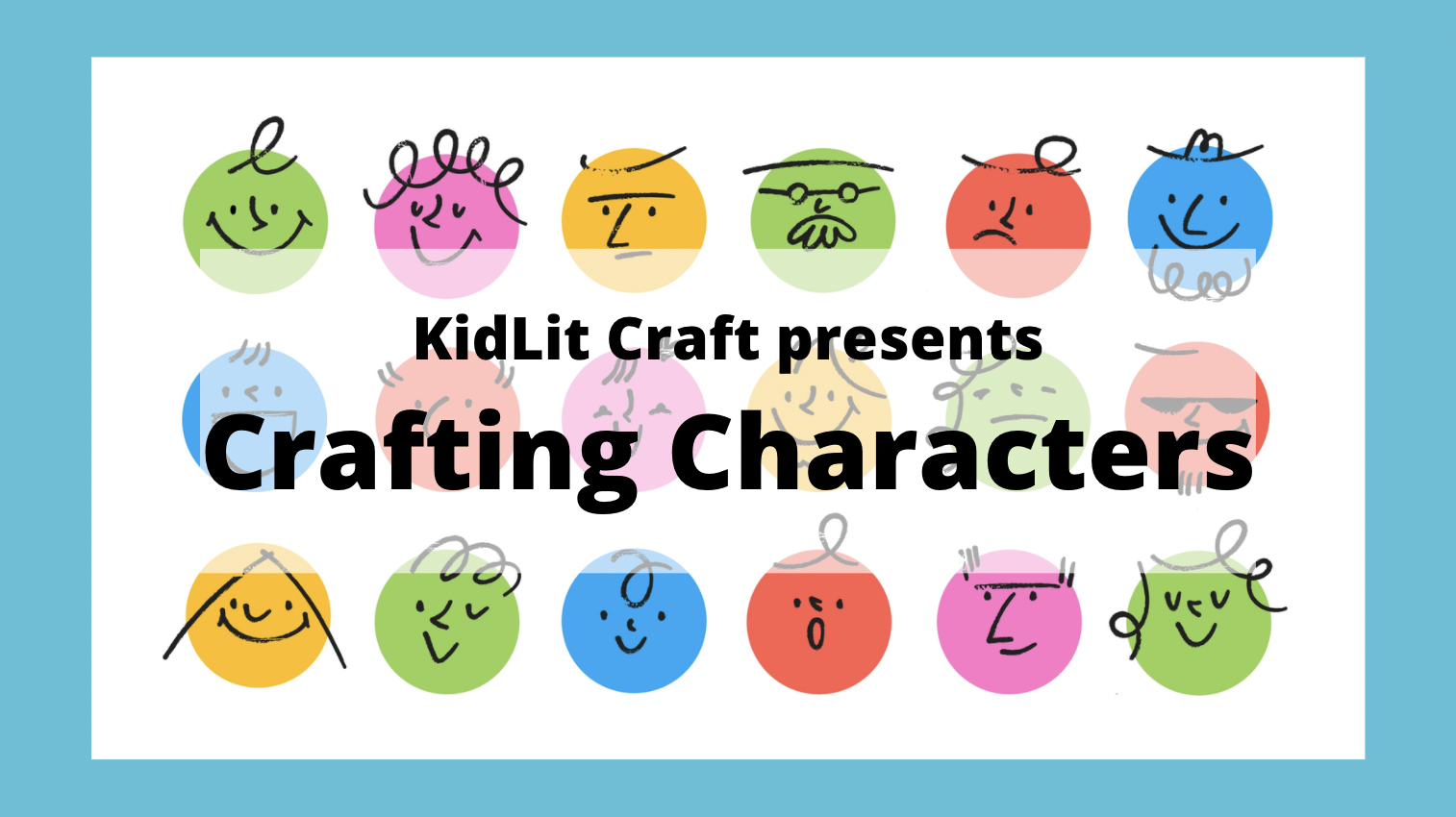Welcome to our second post in our Crafting Characters series. For some people, working out character before putting pen to paper is the best way forward. Others have characters show up nearly fully formed, or at least with enough substance to have something to say. Those people often make efforts to listen to their characters–whether through freewriting, through scenes, or through meditative daydreaming.
These authors and our contributors share their favorite ways to develop their characters. Read on for some mindful strategies for uncovering character and letting the characters speak.
We hope you’ll inspired in ways that help you make your characters come to life. Share your favorite tips with us on Twitter or Instagram (@kidlitcraft #kidlitcraft #craftingcharacters), or Facebook (www.facebook.com/kidlitcraft).
Listening
The first step is always listening. I want to hear how they speak. See what they do. Get out of their way and let me see what I can find. (This is true for fiction and nonfiction!)
That’s why my first question, and the one I ask over and over again throughout drafting, reimagination, and revision is: who are you?
It’s a simple question that can yield all kinds of discovery.
When I first ask this question, I don’t get much. Easy answers, like father or mother, sister, friend, athlete. But as I prod and wait and put characters in scene, magic happens. New answers emerge. And these answers are more emotional. They reveal contradictions, subplot, yearning, and relationships. Characters are never easy to define. No matter what I am writing, I need to keep at it. I keep learning. And listening. I pay attention to dialogue—what is said and not said. I look at how my characters react. When they do, I ask that question again.
Usually, by the time I am ready to press send, I know who my characters are—I’ll usually come up with 50-100 answers. And that means I know what they want, who they care about, what they fear, the burdens they carry, and how they will change.
—Sarah Aronson, her next picture book, Brand-New Bubbe, comes out in August 2022
Noodling First
I get to know my characters in my head before I ever put pen to paper (or rather, fingers to laptop). Of course I think about what they want and what they actually need, but also about how they’d react in certain situations, how they interact with each other, and some of their quirks and traits.
I get to revisit my characters over multiple books [in a chapter book series] so I can develop them and also keep consistent traits throughout the series. How they deal with a bully might change in book four versus book one but their favorite frozen yogurt flavor never does.
—Christine Evans, her new chapter book series is The Wish Library
Daydream, Listen to Character
Honestly, my process isn’t very different from what it was when I was daydreaming as a kid. (Actually, I still daydream.) I just listen to what characters are out there and follow the one I find most interesting. I don’t really feel like my characters are “mine”. It’s more like they’re ghosts or radio frequencies I happened to tune into.
—Skyler Schrempp, her debut middle grade novel, Three Strike Summer, comes out in August 2022
Finding Voice and Considering Form
Character work often feels like magic to me because I don’t have any sort of formalized process for it. If I did have a process I would say it involves a fair bit of improvisation and free-writing when I’m starting a project, as this helps me develop a general sense for the mood and tone of a character’s voice. Then every day before I write anything new I reread what I wrote the day before (often aloud) as a way to internalize this voice. When something sounds right to my ear it stays in, and when it doesn’t, I cut it. Over time this develops into a single character vision in my head that is (hopefully) consistent throughout the course of the story.
I think the only character work I do that is more formalized than just “feel it out” is that I tend to pay really careful attention to the format of the books that I write because the format a character chooses to speak in tells you a lot about who they are. In the case of my published and soon-to-be-published books this tends to manifest itself in weird poetic formats. That is to say, code poems in EMMY IN THE KEY OF CODE, recipe poems in RECIPE FOR DISASTER, crossword poems in WORDS APART (forthcoming). But sometimes, my work plays with form in a less literal way. For example, I’m working on a project now that’s written in a close third person because, to me, that’s how my main character would narrate her own life.
—Aimee Lucido, her latest middle grade novel is Recipe for Disaster
If you missed our first post, on GETTING TO KNOW YOUR CHARACTERS THROUGH FREEWRITING, check it out!
Find our round-up of KidLit Craft posts focused on character here:
Anne-Marie Strohman (co-editor) writes picture books, middle grade novels, and young adult short stories and novels. She is trained as a teacher, an editor, and a scholar, specializing in Renaissance Literature. She holds an MFA in Writing for Children and Young Adults from Vermont College of Fine Arts and is an active member of SCBWI. Find her at amstrohman.com and on Twitter @amstrwriter.

COMMENTs:
0